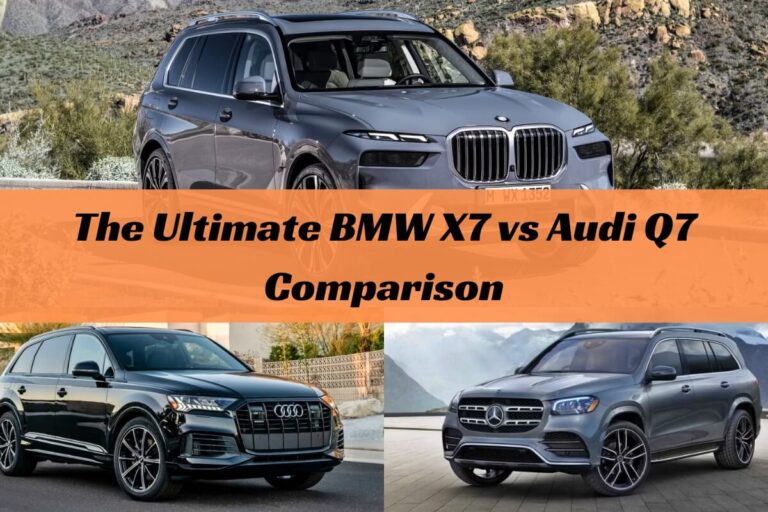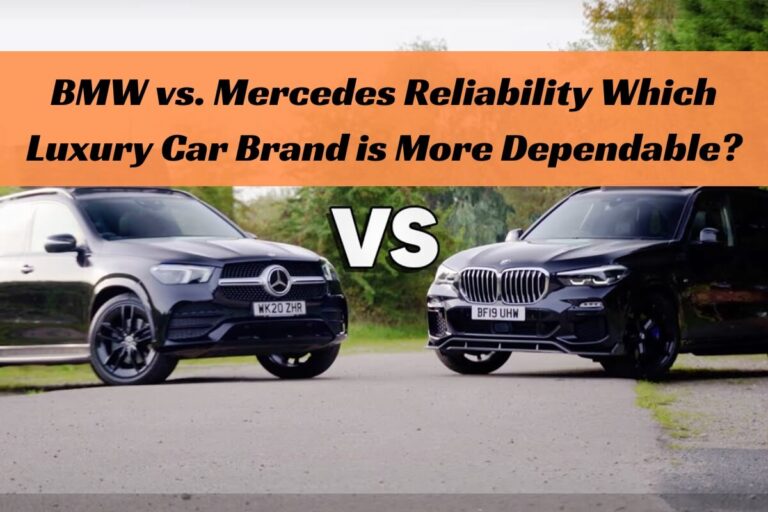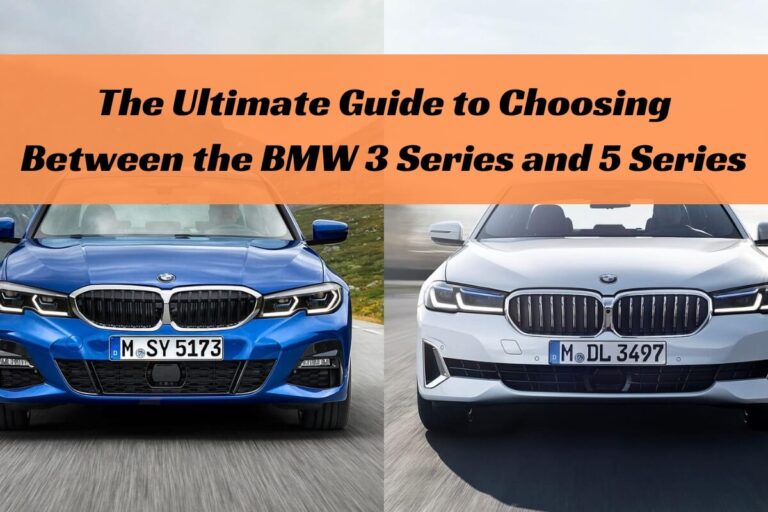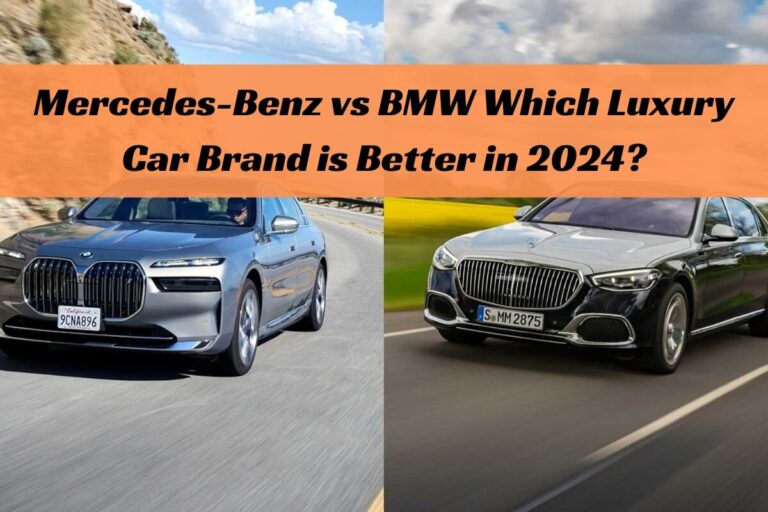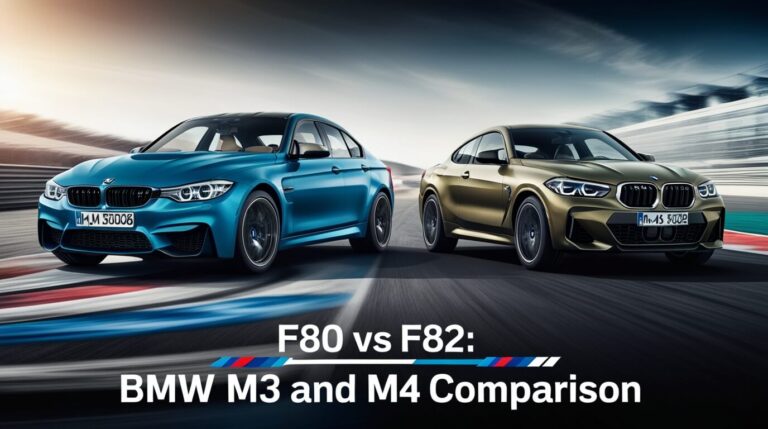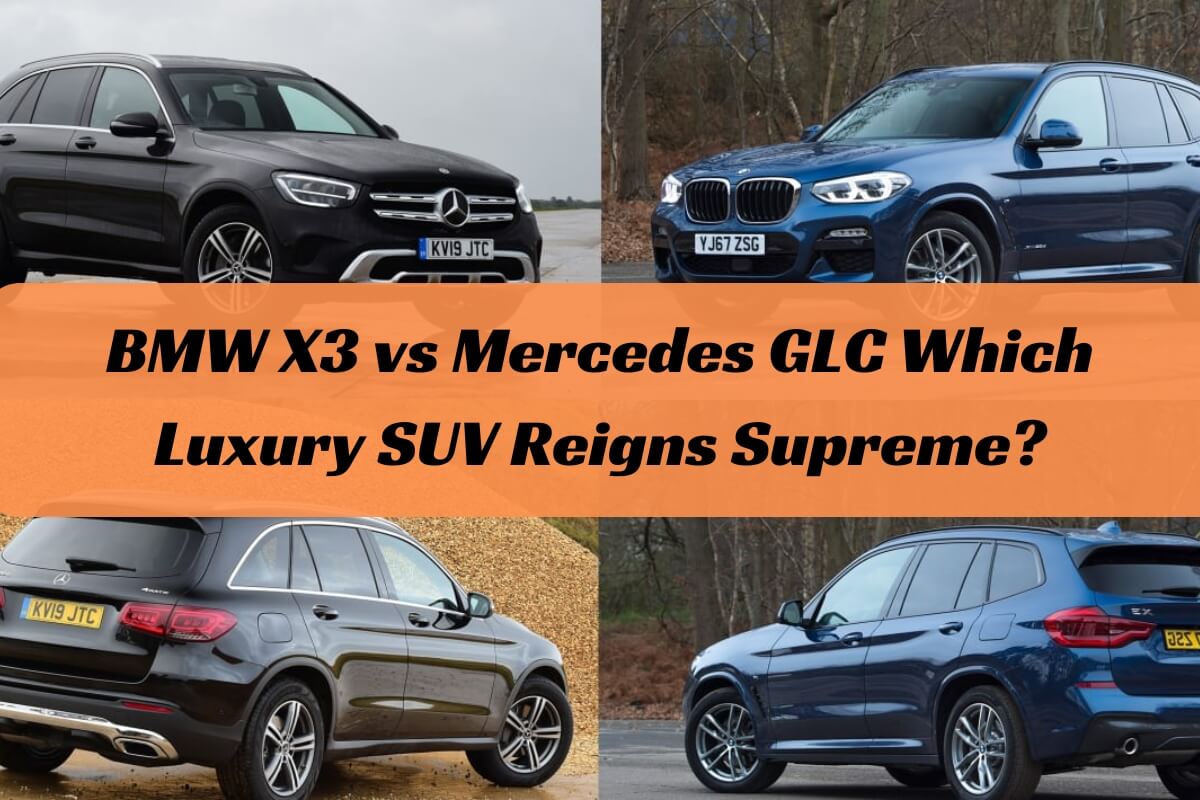
In the competitive world of luxury compact SUVs, the BMW X3 and Mercedes-Benz GLC stand out as two of the most popular and well-regarded choices. Both vehicles offer a compelling blend of premium amenities, advanced technologies, and refined driving dynamics, making the decision between them a tough one for discerning buyers.
So, which of these German rivals comes out on top – the BMW X3 or the Mercedes GLC? The answer ultimately depends on your specific priorities and preferences, but the GLC edges out the X3 with its more modern design, slightly better fuel efficiency, and a touch more interior space.
In this comprehensive comparison, we’ll take an in-depth look at the design and styling, performance capabilities, technology and infotainment features, comfort and convenience factors, safety ratings, and pricing and value propositions of these two luxury SUVs. By the end, you’ll have a clear understanding of where each vehicle excels and falls short, allowing you to make an informed decision that aligns with your needs and lifestyle.
Design and Styling: A Battle of Sleek German Aesthetics
When it comes to exterior design, both the BMW X3 and Mercedes GLC embody the sleek and sophisticated styling cues that are synonymous with their respective brands. The X3 sports BMW’s signature kidney grille and muscular, athletic proportions, while the GLC exudes a more elegant and understated presence with its curvaceous lines and distinctive Mercedes design language.
In terms of dimensions, the X3 and GLC are closely matched, with the BMW being slightly longer (185.9 inches vs. 185.7 inches for the GLC) and the Mercedes offering a marginally longer wheelbase (113.1 inches vs. 112.8 inches for the X3). This translates to a slight advantage in rear legroom for the GLC.
Both vehicles can be outfitted with a variety of wheel designs and styling packages, such as the M Sport package for the X3 and the AMG Line package for the GLC, which add a sportier and more aggressive aesthetic.
On the inside, the GLC edges out the X3 with its more modern and visually striking interior design. The Mercedes boasts a sweeping dashboard with high-quality materials, including real metal trim and available open-pore wood accents. The X3’s cabin, while well-built and functional, feels a bit more dated in comparison.
Performance: Powertrains and Driving Dynamics
When it comes to performance, both the BMW X3 and Mercedes GLC offer a range of powerful and efficient engine options to suit various driving preferences.
The base X3 sDrive30i and xDrive30i models are powered by a 2.0-liter turbocharged four-cylinder engine that produces 248 horsepower and 258 lb-ft of torque. The GLC 300 counters with a slightly more potent 2.0-liter turbocharged four-cylinder engine, generating 255 horsepower and 295 lb-ft of torque. The GLC’s engine also features a 48-volt mild-hybrid system for improved efficiency.
For those seeking more performance, the X3 M40i packs a 3.0-liter turbocharged inline-six with 382 horsepower and 365 lb-ft of torque, while the AMG GLC 43 boasts a 3.0-liter twin-turbocharged V6 that churns out 385 horsepower and 384 lb-ft of torque.
When it comes to fuel economy, the GLC holds a slight edge, thanks in part to its mild-hybrid system. The rear-wheel-drive GLC 300 achieves an EPA-estimated 24 mpg city and 33 mpg highway, while the all-wheel-drive GLC 300 4MATIC returns 22 mpg city and 29 mpg highway. In comparison, the X3 sDrive30i and xDrive30i are rated at 23 mpg city and 29 mpg highway, and 21 mpg city and 27 mpg highway, respectively.
Both vehicles offer a choice of rear-wheel-drive or all-wheel-drive configurations, paired with smooth-shifting automatic transmissions (an 8-speed for the X3 and a 9-speed for the GLC).
In terms of driving dynamics, the X3 tends to be the more engaging and sporty choice, with a taut suspension setup and responsive steering that favors enthusiastic driving. The GLC, on the other hand, leans more towards comfort and refinement, with a more compliant ride and a slightly more relaxed demeanor.
Technology and Infotainment: Cutting-Edge Features
When it comes to in-vehicle technology and infotainment systems, the BMW X3 and Mercedes GLC are both well-equipped with the latest features and connectivity options.
The X3 features BMW’s iDrive infotainment system, which is controlled via a centrally-mounted touchscreen display (ranging from 10.25 inches to 12.3 inches, depending on the trim level) or a rotary knob on the center console. The system is generally intuitive and responsive, offering features like navigation, Apple CarPlay and Android Auto compatibility, and a wide range of vehicle settings and customization options.
The GLC, on the other hand, is equipped with Mercedes’ MBUX (Mercedes-Benz User Experience) infotainment system, which is controlled via a 12.3-inch touchscreen display or a touchpad on the center console. The MBUX system boasts a sleek and modern interface, with features like natural voice recognition, augmented reality navigation, and a range of personalization options.
Both vehicles offer a suite of advanced driver assistance technologies, such as adaptive cruise control, lane-keeping assist, and automatic emergency braking. The GLC, however, offers a more comprehensive suite of advanced safety features as part of its Driver Assistance Package.
When it comes to audio systems, the X3 can be equipped with a premium Harman Kardon sound system, while the GLC offers an optional Burmester surround sound system, which is widely regarded as one of the best in the industry.
Overall, both the iDrive and MBUX infotainment systems are feature-rich and user-friendly, though the GLC’s system feels slightly more modern and cutting-edge.
Comfort and Convenience: Luxury Appointments
One of the primary reasons for choosing a luxury SUV is the expectation of a comfortable and well-appointed interior, and both the BMW X3 and Mercedes GLC deliver in this regard.
In terms of front seat accommodations, both vehicles offer ample head- and legroom, with supportive and comfortable seating surfaces. The GLC, however, offers slightly more generous rear legroom (37.2 inches vs. 36.4 inches in the X3), making it a better choice for those who frequently carry rear passengers.
Both vehicles offer a range of seat adjustment options, including power-adjustable front seats, heated and ventilated seats, and massaging functions (depending on the trim level and options selected).
The GLC edges out the X3 when it comes to cargo space, offering 21.9 cubic feet of space behind the rear seats and 56.3 cubic feet with the rear seats folded down. The X3, in comparison, offers 28.7 cubic feet behind the rear seats and 62.7 cubic feet with the seats folded.
Both vehicles feature dual-zone automatic climate control as standard, with available upgrades to tri-zone or quad-zone climate control systems, ensuring optimal comfort for all occupants.
Additional comfort and convenience features available on both vehicles include panoramic sunroofs, hands-free liftgates, wireless charging pads, and a range of interior ambient lighting options.
Safety Ratings: Prioritizing Peace of Mind
Safety is a top priority for any vehicle, and both the BMW X3 and Mercedes GLC have undergone rigorous testing by leading safety organizations.
The X3 has earned a 5-star overall safety rating from the National Highway Traffic Safety Administration (NHTSA), as well as a Top Safety Pick+ award from the Insurance Institute for Highway Safety (IIHS) when equipped with specific headlight configurations.
Similarly, the GLC has also received a 5-star overall safety rating from the NHTSA and a Top Safety Pick+ award from the IIHS when equipped with certain optional safety features.
Both vehicles come standard with a comprehensive suite of advanced safety features, including forward collision warning, automatic emergency braking, and blind-spot monitoring. Additionally, optional features like adaptive cruise control, lane-keeping assist, and rear cross-traffic alert are available to further enhance safety.
Pricing and Value: Getting the Most Bang for Your Buck
When it comes to pricing, the BMW X3 and Mercedes GLC are relatively competitive, with starting prices in the mid-to-high $40,000 range for their base models. The X3 sDrive30i has a starting MSRP of around $45,900, while the GLC 300 starts at approximately $47,500.
However, as you move up the trim levels and add optional packages, the prices can escalate quickly. A well-equipped X3 xDrive30i with popular options like the M Sport package, Premium Package, and convenience features can easily reach the mid-$50,000 range. Similarly, a fully loaded GLC 300 4MATIC with the AMG Line package, Multimedia Package, and advanced safety features can push the price tag into the low-to-mid $60,000 range.
It’s worth noting that the GLC tends to be more expensive than the X3 when comparing similarly equipped models, which could be a deciding factor for budget-conscious buyers.
When considering long-term ownership costs, both vehicles are expected to have relatively high maintenance and repair costs, as is typical for luxury vehicles. However, the X3 may have a slight advantage in this regard, as BMW vehicles generally have lower average ownership costs compared to their Mercedes counterparts.
In terms of resale value, both the X3 and GLC are expected to retain their value well, thanks to their strong brand reputations and desirability in the used luxury SUV market. According to industry experts, the X3 may have a slight edge in terms of long-term resale value, but the difference is relatively minor.
Frequently Asked Questions About the BMW X3 and Mercedes GLC
To help address some common queries, here are answers to frequently asked questions about these two luxury SUVs:
Which SUV has better fuel economy?
The Mercedes GLC holds a slight advantage in fuel efficiency, thanks to its mild-hybrid powertrain. The rear-wheel-drive GLC 300 achieves an EPA-estimated 24 mpg city and 33 mpg highway, while the all-wheel-drive GLC 300 4MATIC returns 22 mpg city and 29 mpg highway. In comparison, the X3 sDrive30i and xDrive30i are rated at 23 mpg city and 29 mpg highway, and 21 mpg city and 27 mpg highway, respectively.
How do the infotainment systems compare?
Both the BMW iDrive and Mercedes MBUX infotainment systems are feature-rich and user-friendly, but the GLC’s MBUX system feels slightly more modern and cutting-edge, with a sleek interface and advanced features like natural voice recognition and augmented reality navigation.
Which vehicle offers more cargo space?
The BMW X3 has a slight advantage in cargo capacity, offering 28.7 cubic feet of space behind the rear seats and 62.7 cubic feet with the rear seats folded down. The GLC offers 21.9 cubic feet behind the rear seats and 56.3 cubic feet with the seats folded.
Are there performance-oriented variants available?
Yes, both vehicles offer high-performance variants. The X3 M40i packs a 3.0-liter turbocharged inline-six with 382 horsepower and 365 lb-ft of torque, while the AMG GLC 43 boasts a 3.0-liter twin-turbocharged V6 that churns out 385 horsepower and 384 lb-ft of torque.
What safety features come standard on each model?
Both the X3 and GLC come standard with a comprehensive suite of advanced safety features, including forward collision warning, automatic emergency braking, and blind-spot monitoring. However, the GLC offers a more comprehensive suite of optional advanced safety features as part of its Driver Assistance Package.
Conclusion
In the battle between the BMW X3 and Mercedes GLC, it’s clear that both vehicles offer a compelling blend of luxury, performance, and practicality. While the X3 may appeal more to driving enthusiasts with its engaging handling and slightly sportier demeanor, the GLC counters with a more modern interior design, better fuel efficiency, and a touch more interior space.
Ultimately, the choice between these two premium compact SUVs will come down to your individual priorities and preferences. If you value a more engaging driving experience and a slightly more affordable price tag, the X3 could be the way to go. However, if you prioritize cutting-edge technology, a more luxurious interior, and slightly better fuel efficiency, the GLC may be the better choice.
Regardless of your decision, both the BMW X3 and Mercedes GLC represent excellent options in the luxury compact SUV segment, offering a winning combination of style, performance, and premium amenities. The best way to determine which one suits you better is to schedule test drives and experience these vehicles firsthand.


